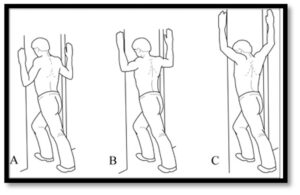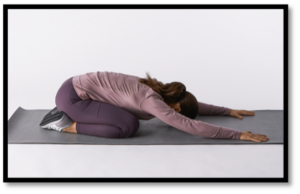Blog, Physiotherapy, Posture, Stretches
The Connection Between Posture and Shoulder Health
In the fast-paced world of sedentary lifestyles and prolonged screen time, the often-overlooked issue of poor posture can have a significant impact on shoulder health. Many individuals unknowingly adopt habits that contribute to shoulder pain and injuries.
By shedding light on the relationship between posture and shoulder well-being, we hope to empower others to take proactive measures in their daily routines, fostering a deeper understanding of body mechanics and reducing the risk of discomfort and injuries associated with poor posture.
Poor posture, characterised by a slouched or hunched position, places undue strain on the muscles and ligaments surrounding the shoulders. This prolonged stress can lead to muscular imbalances, where some muscles are overused while others weaken, affecting the overall stability of the shoulder joint. Incorrect posture also alters the biomechanics of the shoulder, potentially causing impingement or compression of tendons and nerves. Over time, this misalignment may contribute to conditions such as rotator cuff injuries, frozen shoulder, or chronic pain.
Understanding the biomechanics of shoulder movement within the context of posture reveals several key factors:
- Alignment of the Spine:
- Good posture, characterised by a straight and aligned spine, establishes a stable base for shoulder movement. Proper spinal alignment reduces the risk of abnormal stresses on the shoulder joints and muscles.
- Muscular Engagement:
- Maintaining an upright posture ensures proper engagement of the muscles around the shoulder girdle. Poor posture may lead to muscle imbalances, affecting the coordinated movement of the shoulder joint.
- Thoracic Spine Mobility:
- Adequate mobility in the thoracic spine, particularly the upper back, is necessary for proper shoulder movement. Poor posture in the upper back can limit thoracic spine mobility, impacting the ability to raise the arms overhead or perform other shoulder movements with efficiency.
- Joint Alignment and Stability:
- Incorrect posture may contribute to misalignments, reducing joint stability and increasing the risk of injuries such as dislocations or rotator cuff problems.
- Neuromuscular Control:
- When the body is in a well-aligned posture, the nervous system can efficiently coordinate muscle contractions and joint movements, promoting smooth and controlled shoulder biomechanics.
Incorporating simple stretches into your routine can further aid in alleviating shoulder pain and positively influencing the factors listed above:
1. The Shoulder Blade Squeeze

2. Doorway Stretch for Shoulders

3. Child’s Pose

These stretches are designed to target specific areas of tension. Performing these stretches gently, along with regular maintenance of good posture, can be instrumental in preventing and alleviating shoulder and back pain over time. If you experience any pain beyond a gentle stretch sensation, it’s advisable to consult with a healthcare professional for personalised guidance on addressing your specific concerns.
Maintaining good posture plays a vital role in preventing unnecessary stress on the shoulders, promoting proper alignment, and reducing the risk of pain and injuries associated with prolonged poor posture. If you suffer from shoulder pain or injuries, book an appointment with one of our expert physiotherapists today or give us a call on 1800 992 999!
 |
Written By:
Piumi Herath (Physiotherapist) B.Phty (Hon) |


